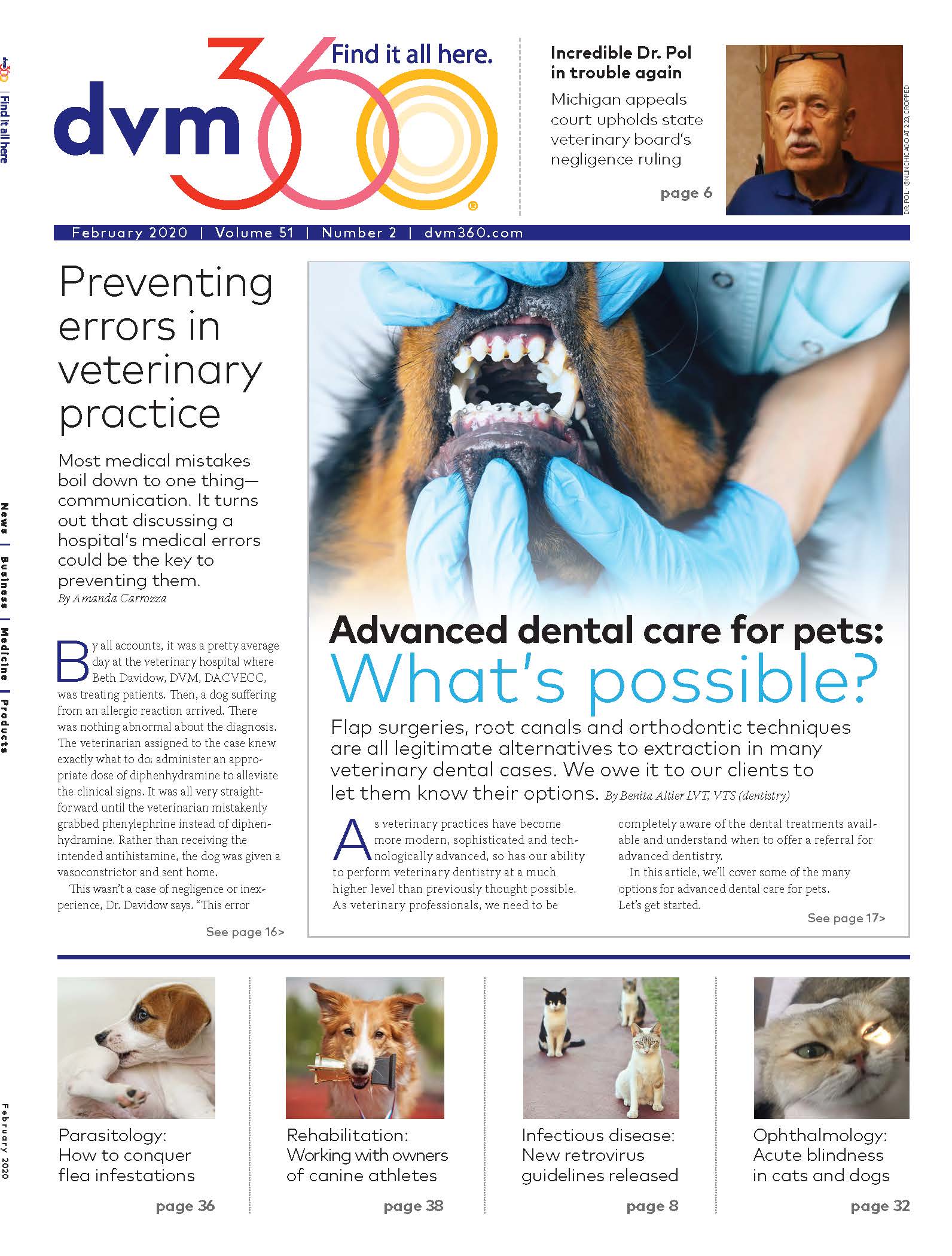CDC: Veterinarians at disproportionate risk of suicide
Male veterinarians are 2.1 times, and female veterinarians 3.5 times, more likely to die by suicide than the general U.S. population, according to new research from the Centers for Disease Control and Prevention.
Editor's note: This article includes discussion of suicide, depression and mental health issues. If you're experiencing feelings of depression or suicidal ideation, please call the National Suicide Prevention Lifeline (800-273-TALK; 800-273-8255; suicidepreventionlifeline.org). It's 24 hours a day, 7 days a week. No matter what problems you are dealing with, people on the other end of the line will help you find a reason to keep living.
Supporting the profession's growing concern with the well-being of veterinarians, a new study shows that suicide rates of veterinarians are "significantly higher than for the general U.S. population," according to researchers at the Centers for Disease Control and Prevention (CDC).
What we can do
In the report "Suicide among veterinarians in the United States from 1979 through 2015," researchers hope to see stakeholders in the veterinary profession take up a three-pronged approach to lowering the suicide rate among veterinarians:
1. Start with new tools and strategies recommended by the CDC "to prevent or reduce suicides." (You can download "Preventing suicide: A technical package of policies, programs and practices" here.) Strategies most relevant to at-risk veterinarians could be "creating protective environments, teaching coping coping and problem-solving skills, and identifying and supporting people at risk."
2. Continue to get stakeholders together. Calling out the AVMA, state VMAs and other veterinary professional associations and schools as well as experts on suicide prevention, the researchers said they could all "contribute to implementation of an effective and comprehensive suicide prevention strategy."
3. Check for results. Last but not least, researchers hope "periodic analyses" are done with AVMA obituary and AVMA life insurance data to monitor PMRs and assess any new programs of "suicide prevention interventions."
The researchers also suggested more should be done to "limit and control access to potentially lethal pharmaceutical products," as pharmaceuticals were the second-most-common method of death by suicide (after firearms) for U.S. veterinarians, especially among those in clinical practice.
Updating more than 30-year-old research of suicide rates of the mostly male and mostly food-animal veterinarians at the time, the new study published online by JAVMA looks at the proportionate mortality ratios (PMRs) for suicide among male and female veterinarians, now predominantly in clinical small animal practice.
Without the number of total veterinarians for comparison, researchers had to rely on PMR, not "standardized mortality ratios." A PMR value of more than 1.00 shows the suicide rate is "greater than expected," according to the researchers. The results were significant, as the study found "male veterinarians were 2.1 times ... and female veterinarians were 3.5 times as likely as the general U.S. population to die by suicide" from 1979 through 2015. Citing this as the first study to "investigate PMRs for suicide among female U.S. veterinarians," researchers noted that, while men are more likely to die by suicide in the general population, female veterinarians are more likely to die by suicide than male veterinarians.
Researchers quoted previous research, including the Merck Animal Health Veterinary Wellbeing Study, that indicated risk factors for this high suicide rate: "long work hours, work overload, practice management responsibilities, client expectations and complaints, euthanasia procedures and poor work-life balance."
Data for the study came from AVMA records of deceased U.S. veterinarians obtained through obituaries submitted to the organization, settlements on AVMA life insurance policies and internet searches for veterinarian obituaries. To build and statistically verify the numbers, researchers checked the data against records at the CDC as well as the National Institute for Occupational Safety and Health.
